My beloved native prairie garden is thriving. I planted this experiment in the most inhospitable of locations a number of years ago. It occupies a strip about 17 feet long by 2 feet deep between my garage and the city alley. That spot takes a beating every winter, facing snow, salt, snow blowers, snow plows, garbage bins, and shovels. In the summer it only receives afternoon sun and contends with vehicles, dogs, and, people who don’t even notice there is a prairie in their midst.
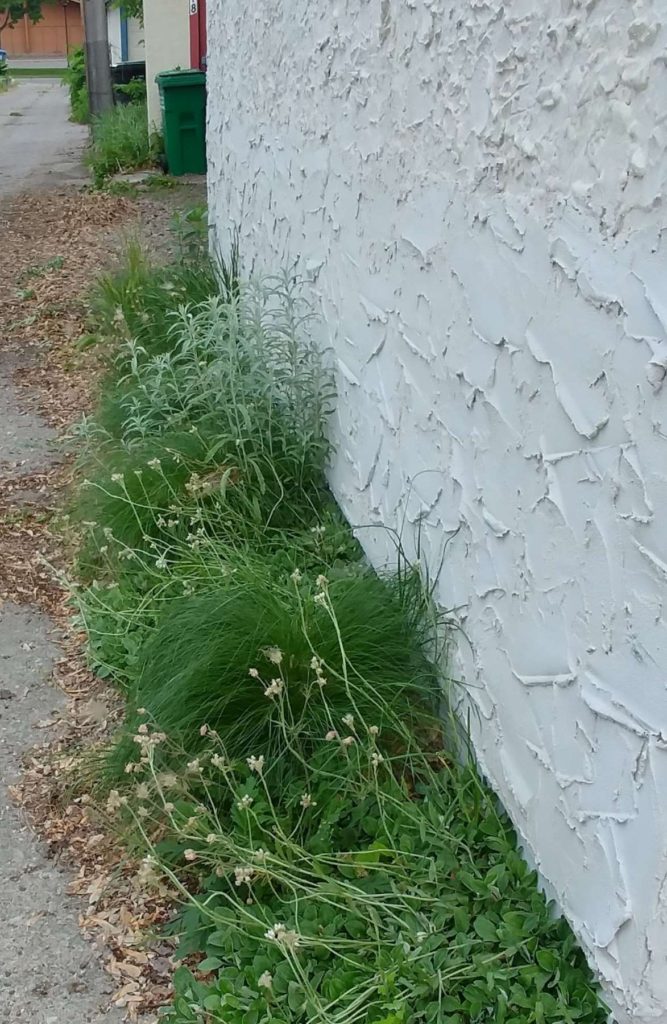
I became enamored with prairies a number of years ago when I visited Blue Mounds Minnesota State Park in the south western corner of the state while on a pilgrimage to the family South Dakota grave site. I managed to visit in spring when the park’s prairie was in full bloom. I was so mesmerized by the variety and beauty of flora in the prairie that I never even noticed the bison for which the park is known. I couldn’t walk the relatively small prairie without wondering what it must have been like to see the vast mid North American continent before domestic agriculture turned the land into a chemical waste dump.

Prairie smoke, one of the original plantings, is an early bloomer. 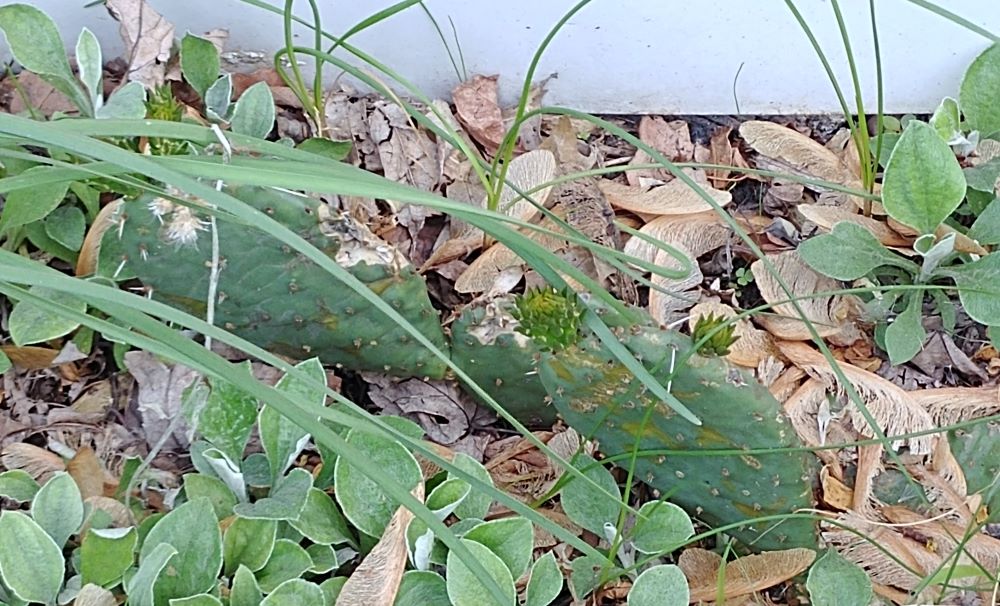
I saw cacti in the Blue Mounds prairie and was inspired.
Leave it alone
I’ve learned that the trick for helping a native prairie thrive (once it’s established) is to just leave it alone. Fertilizer will kill it. So, I try to follow directions and just let it be (although I do some weeding of random invaders, pick up the trash that appears, and add plants periodically). This year, the two newcomer plants (planted last year) are thriving: the sacred prairie sage is glorious and the life-giving milkweed is doing just fine, thank you.
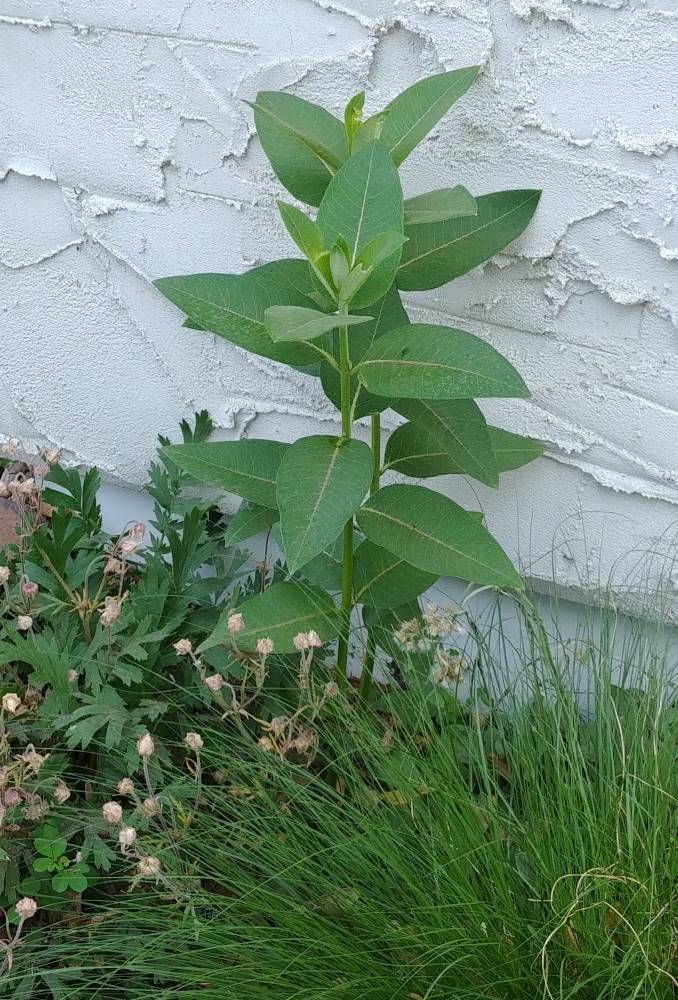
This milkweed is a newcomer. I bought it at the Bloomington Garden Club plant sale last year. Once they get established, milkweeds are pretty self-sufficient members of the prairie community. 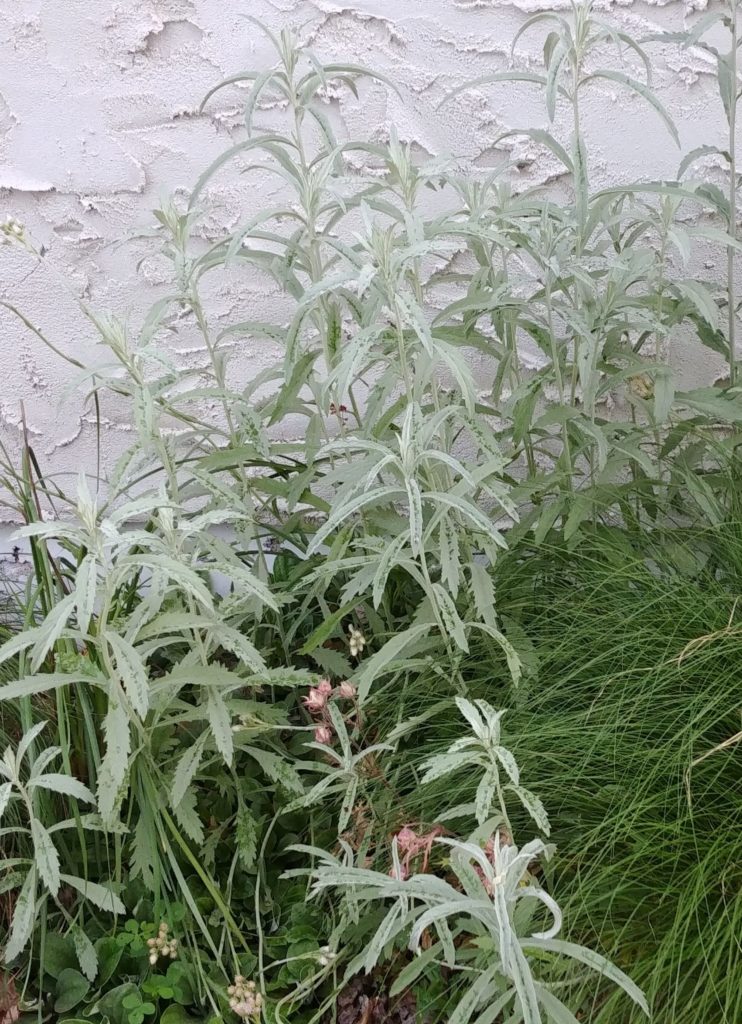
Prairie Sage is considered sacred by the native peoples of this continent. This was the first plant entrusted to the care of humans by the creator.
Once, a few years ago, when I was cleaning out the prairie, a distant neighbor asked me “why bother?” to work on a garden on the alley in a city. I was stunned. All I could sputter out was “because it’s beautiful!” He just glared at me and walked away. I felt sad for that guy.
The world is an ugly place these days, there is no doubt about it. I cannot ignore the ugliness or suffering will increase astronomically and I will be complicit. At the same time, I cannot ignore the sacred and beautiful or I will lose my sense of purpose. And without purpose, the question, “Why bother?” becomes a valid question with no answer.
I cannot not ignore the sacred and beautiful or I will lose my sense of purpose. And without purpose, the question, “Why bother?” becomes a valid question with no answer.
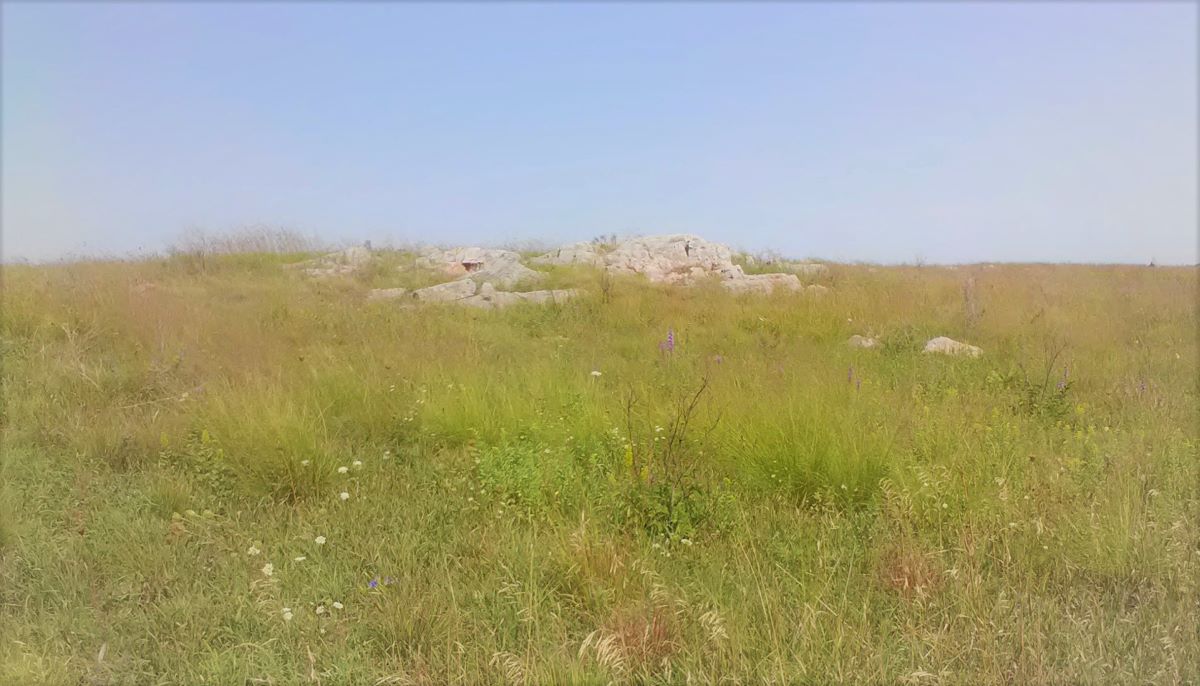
2 replies on “Recognizing the Sacred”
Love the sagebrush it smells so good
Hi Patrina,
Thanks for your response! Yes, the Prairie Sage has a distinct scent. It’s a bit lemony, less savory than the more common garden sage (Salvia officinalis) used in most cooking.